Odisha
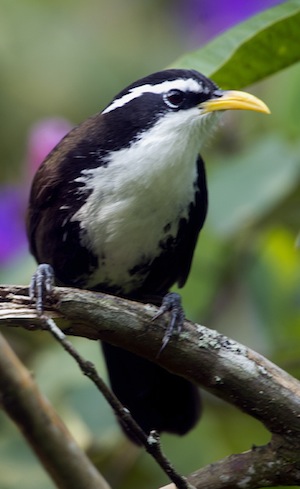
Odisha, formerly Orissa is a state located in Eastern India. It is the eighth-largest state by area, covering 155,707 km2 (60,119 square miles) and the eleventh-largest by population, with around fifty million inhabitants. It neighbours the states of Jharkhand and West Bengal to the north, Chhattisgarh to the west, and Andhra Pradesh to the south. Odisha has a coastline of 485 kilometres (301 miles) along the Bay of Bengal in the Indian Ocean. The region is also known as Utkaḷa and is mentioned by this name in India’s national anthem, Jana Gana Mana. The language of Odisha is Odia, which is one of the Classical languages of India.
In the eastern part of the state lies the coastal plain. It extends from the Subarnarekha River in the north to the Rushikulya River in the south. The lake Chilika is part of the coastal plains. The plains are rich in fertile silt deposited by the six major rivers flowing into the Bay of Bengal: Subarnarekha, Budhabalanga, Baitarani, Brahmani, Mahanadi, and Rushikulya. The Central Rice Research Institute (CRRI), a Food and Agriculture Organization-recognised rice gene bank and research institute, is situated on the banks of Mahanadi in Cuttack. The stretch between Puri and Bhadrak in Odisha juts out a little into the sea, making it vulnerable to any cyclonic activity.
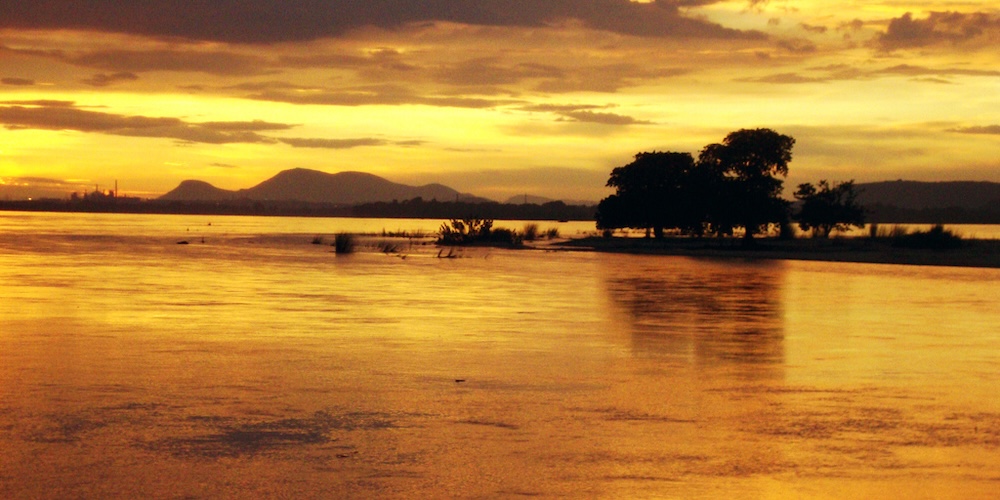
Mahanadi River – ©Kamalakanta777 CC BY-SA 3.0 via Wikimedia Commons
Three-quarters of the state is covered in mountain ranges. Deep and broad valleys have been made in them by rivers. These valleys have fertile soil and are densely populated. Odisha also has plateaus and rolling uplands, which have lower elevation than the plateaus. The highest point in the state is Deomali at5485 feet in Koraput district. Some other high peaks are: Sinkaram, Golikoda and Yendrika.
There are four seasons: winter (January to February), pre-monsoon season (March to May), south-west monsoon season (June to September) and north east monsoon season (October–December). However, locally the year is divided into six traditional seasons (or rutus): Grishma (summer), Barsha (rainy season), Sharata (autumn), Hemanta (dewy),Sheeta (winter season) and Basanta (spring).
Birding Odisha
Odisha has 48,900 km2 of wild forest, covering over 30% of the state’s total area, although some of its wilderness areas are being lost to timber smuggling, deforestation, destructive mining, and general urban industrialisation, as well as livestock grazing. There have been attempts at conservation and reforestation.
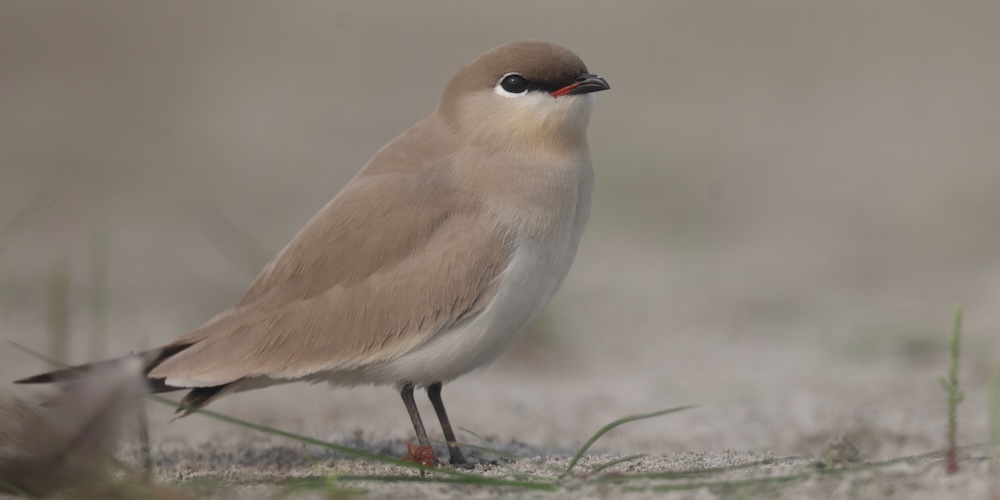
Small Pratincole Glareola lactea – ©Bird-Photo-Tours ASIA
Simlipal National Park is a protected wildlife area and Bengal tiger reserve spread over 2,750 km2 of the northern part of Mayurbhanj district and is home to around 55 species of mammal, including the Bengal tiger, chital, chousingha, common langur, gaur, Indian elephant, Indian giant squirrel, jungle cat, leopard, muntjac, sambar, small Indian civet and wild boar. 300 species of birds have been recorded, including Grey, Indian Pied and Malabar Pied Hornbills. There are also some 60 species of reptiles and amphibians, including the famed king cobra, plus banded krait and tricarinate hill turtle, with a mugger crocodile breeding programme in nearby Ramtirtha.
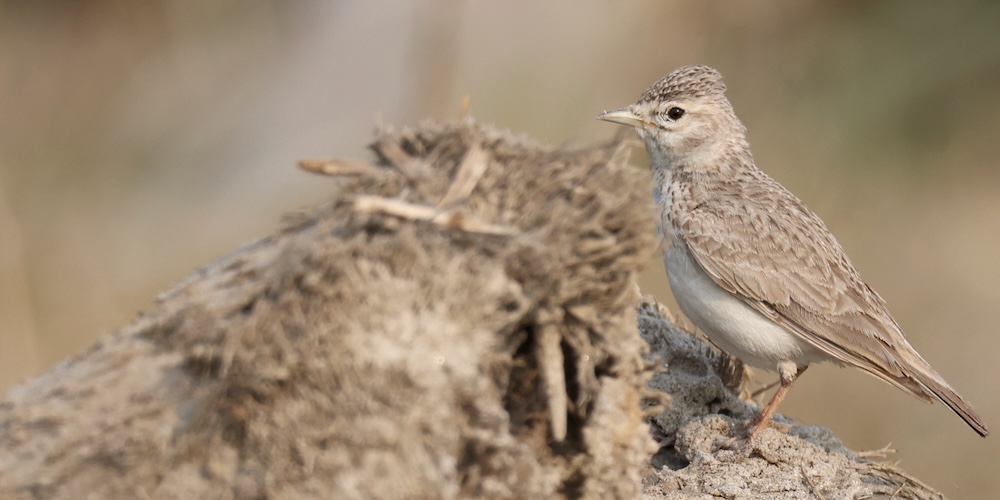
Sand Lark Alaudala raytal – ©Bird-Photo-Tours ASIA
The Chandaka Elephant Sanctuary is a 190 km2 protected area near the capital city, Bhubaneswar. However, urban expansion and over-grazing have reduced the forests, driving the herds of elephants to migrate away, as well as increasing human-elephant conflicts—which sometimes results in injury and death (on both sides). Many of the animals have migrated toward the Barbara Reserve Forest, Chilika, Nayagarh district, and Athagad. Besides elephants, the sanctuary also has leopards, jungle cats and herds of chital.
Bhitarkanika National Park in Kendrapara district covers 650 km2, of which 150 km2 are mangroves. Gahirmatha Beach, in Bhitarkanika, is the world’s largest nesting site for olive ridley sea turtles. The sanctuary is also noted for its large population of saltwater crocodiles and Asian water monitors, the second-largest lizard species on earth, in addition to axis deer and rhesus macaques. In winter, the park is also visited by many migratory birds. Among its many species, both resident and migratory, are kingfishers (including Black-capped, Collared and Common Kingfishers), herons (such as black-crowned Night, Grey, Purple and Striated Herons), Indian Cormorants, Openbill Storks, Oriental White Ibis, Pheasant-tailed Jacana, Sarus Cranes, Spotted Owlets and White-bellied Sea-eagles.
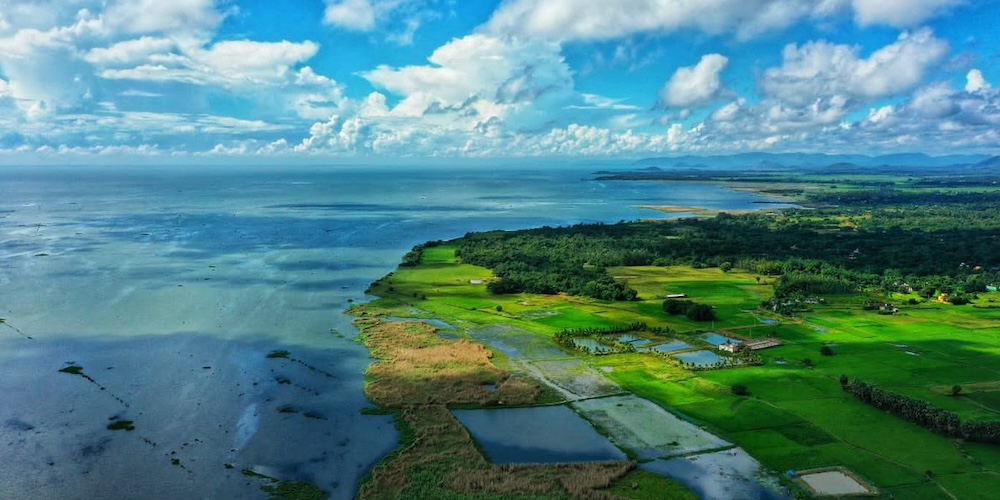
Chilika Lake – ©Government of Odisha CC BY 4.0 via Wikimedia Commons
Chilika Lake is a brackish water lagoon on the east coast of Odisha with an area of 1,105 km2. It is connected to the Bay of Bengal by a 35-km-long narrow channel and is a part of the Mahanadi delta. In the dry season, the tides bring in salt water. In the rainy season, the rivers falling into the lagoon decrease its salinity. Birds from places as far as the Caspian Sea, Lake Baikal (and other parts of Russia), Central Asia, Southeast Asia, Ladakh and the Himalayas migrate to the lagoon in winter. Among the waterfowl and wading birds spotted there are Bar-headed Goose, Greater Flamingo and Goliath Heron. The lagoon also has a small population of the endangered Irrawaddy dolphins.
-
Wikipedia
GNU Free Documentation License
https://en.wikipedia.org/wiki/Orissa
-
Number of bird species: 601
(As at July 2025)State Bird: Indian Roller Coracicas Benghalensis
-
Avibase
PDF ChecklistThis checklist includes all bird species found in Odisha , based on the best information available at this time. It is based on a wide variety of sources that I collated over many years. I am pleased to offer these checklists as a service to birdwatchers. If you find any error, please do not hesitate to report them. -
Bubo Birding
PDF ChecklistThis checklist includes all species that have been reported in Odisha in eBird, but updated to IOC taxonomy, together with the likelihood of seeing each species for each month of the year. -
E-Bird
PDF ChecklistThis checklist is generated with data from eBird (ebird.org), a global database of bird sightings from birders like you. If you enjoy this checklist, please consider contributing your sightings to eBird. It is 100% free to take part, and your observations will help support birders, researchers, and conservationists worldwide.
-
Birds of Odisha A Pictorial Encyclopaedia
| By Pramod & Gloria Dhal | Dhara Shreeradha Trust | 2019 | Hardback | 720 pages, colour photos | ISBN: 9789388824002 Buy this book from NHBS.com -
Birds of the Indian Subcontinent
| By Richard Grimmett, Carol Inskipp & Tim Inskipp | Helm | 2025 | Edition 2 | Paperback | 544 pages, 240+ plates with colour illustrations; colour distribution maps, b/w illustrations | ISBN: 9781472984777 Buy this book from NHBS.com -
Threatened Birds of Odisha
| By Asad R Rahmani & Manoj V Nair | Oxford University Press | 2015 | Paperback | 180 pages, colour photos, colour maps | ISBN: 9780199466504 Buy this book from NHBS.com
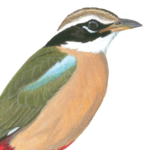
Birds of the Indian Subcontinent
Apple iOS | AndroidThe eGuide to Birds of the Indian Subcontinent is an interactive companion to Birds of the Indian Subcontinent – the definitive guide for birdwatchers visiting the region. It covers India, Pakistan, Nepal, Bhutan, Bangladesh, Sri Lanka and the Maldives. This application has specific features that will enhance your birding experience.
Indian Birds
Apple iOS | AndroidPioneers in bringing Indian Birding to the smart phone generation - Introducing Indian Birds, the time-honoured and cherished birding companion for India. Established in 2010, it proudly remains the sole mobile app available on App Store, offering bird enthusiasts the ability to explore bird namesReserves-
BS Nalbana
InformationSatellite ViewNalbana Island is the core area of the Ramsar designated wetlands of Chilika Lake. It was declared a bird sanctuary under the Wildlife Protection Act in 1972. -
BS WII IBA Chilka Lake
InformationSatellite ViewIt is the largest wintering ground for migratory birds on the Indian sub-continent. The lake is home to a number of threatened species of plants and animals. -
NP Bhitarkanika
InformationSatellite View215 species of avifauna including eight varieties of Kingfishers. Birds such as Asian Open Bill, Cormorants, Darters, Black Ibis, Egrets, are frequently seen in the park… -
NP Nandankanan Zoological Park
InformationSatellite ViewLiterally meaning the Garden of Pleasure, Nandankanan is a combination of a beautiful botanical garden, a zoo and a sanctuary. Situated 20 km from Bhubaneshwar, Nandankanan provides perfect escape from the hustle and bustle of the city. The quiet environment of Nandankanan is set amidst a vast expanse of the Chandaka forest where the flora and fauna flourish in their most natural habitat and environment… -
NP Simlipal
InformationSatellite View231 species of birds nest in these forests. Red Jungle Fowl, Hill Myana, Peafowl, Alexandrine Parakeet, Crested Serpent Eagle are common. The Grey Hornbill, Indian Pied Hornbill, Malabar Pied Hornbill and Indian Trogon are also found in the reserve. Apart from the large number of mammals and bird species, the park has a sizeable population of reptiles which includes snakes and turtles. The Mugger management programme has helped the Mugger crocodile to survive and flourish on the banks of river Khairi… -
NP TR Sanjay
InformationSatellite ViewBengal tiger, Indian leopard, Spotted deer, Sambar deer, wild boar, Nilgai, Chinkara, Civet, Porcupine, Monitor lizard, and 309 species of birds are found here. Among the many birds here are the Golden Hooded Oriole, Racket-tailed Drongo, Indian pitta, Rufous treepie, Lesser adjutant, Red-headed vulture, Cenareous vulture, White-rumped vulture, Egyptian vulture and Nightjar. -
WS Baisipalli
InformationSatellite ViewIt is 168.35 square kilometres (41,600 acres) of sanctuary land, home to bears, elephants, leopards, Sambar Deer, and spotted deer -
WS Balimela
InformationSatellite Viewt covers an area of 160 km². The terrain is hilly, and covered with mixed deciduous forests. It is in the Eastern Highlands moist deciduous forests ecoreg -
WS Balukhand-Konark
InformationSatellite ViewThe sanctuary has an area of 72 km², and is located along the Bay of Bengal coast, between the towns of Puri and Konark. -
WS Chandaka Forest & Elephant Reserve
InformationSatellite View…Prominent birds of the sanctuary are Peafowl, Red jungle fowl, Crested serpent eagle, Great horned owl, Black-headed oriole, Paradise Flycatcher, Coucal and stone curlew. Kumarkhunti reservoir, during winter, serve as transient roosting and feeding ground for several migratory duck species, notably, Garganey and common Teal, Pintail, spot billed and bramhiny Duck and white eyed Pochard. Lesser whistling Teal, Dabehick, Cotton Teal, Nakta, lesser Cormorant, bronze winged Jacana, white breasted Waterhen, pied, white breasted and little blue King fishers and red wattled Lapwings are other resident birds around. In July the reservoir transform in to an abode of migratory birds, mainly, open billed Storks, pond Heron, Egrets and Cormorants. Butterflies are abundant during monsoon and post monsoon months… -
WS Debrigarh
InformationSatellite ViewDebrigarh Wildlife Sanctuary, an important site for in-situ conservation of wildlife and its habitat in the state of Odisha is home to an immense array of biodiversity, over 40 species of mammals, 234 species of birds, 41 species of reptiles, 12 species of amphibians, 42 species of fishes, 39 species of odonates, 85 species of butterflies and 38 species of spiders and extremely important in the national context because of significant population of Schedule-I species like Leopard, Indian Gaur and Four-horned Antelope. The fauna includes Indian leopard, Indian elephant, sambar, chital, and gaur. -
WS Hadgarh
InformationSatellite ViewThe sanctuary lies in the catchment of Salandi river, a major tributary of the river Baitarani. Besides the Salandi river, the other perennial and seasonal streams are Mukta stream, Ghagara stream, Pitanau stream, Andheri stream, Suranga stream, Chakratirtha stream and Bentokholi stream. -
WS Kapilasa
InformationSatellite ViewImportant fauna include Asian elephant, Bengal fox, Golden jackal, Gray langur, Indian crested porcupine, Indian giant squirrel,[9] Indian peafowl, Sambar deer, Striped hyena, Wild boar,[5][7] and various varieties of birds, lizards etc. -
WS Karlapat
InformationSatellite ViewThis sanctuary is home to many wildlife species like tiger, leopard, sambar, nilgai, barking deer, mouse deer, a wide variety of birds like green munia, Great Eared-nightjar and various reptiles. -
WS Kondakameru
InformationSatellite ViewIt covers an area of 430 km², mostly small hills and valleys. It is in the Eastern Highlands moist deciduous forests ecoregion. The major plant communities are mixed deciduous forests and scrublands. -
WS Kuldiha
InformationSatellite ViewKuldiha Wildlife Sanctuary is situated in the district of Balasore in the state of Orissa. The forests of the region cover the Nato hills and the Sukhupata hills merging with the Similipal National Park… -
WS Saptasajya
InformationSatellite ViewThe Saptasajya Wildlife Sanctuary (alternatively, Saptasajya Reserve Forest) is a relatively small protected forest reserve of 20 km2 (8 sq mi) in the Chota Nagpur Plateau region. It is a mixed deciduous forest dominated by the Sal tree.It got officially recognized as a sanctuary in 1970. The fauna mainly consists of wild goats, buffaloes, cows, leopard and a variety of birds. -
WS TR Satkosia Gorge
InformationSatellite ViewSatkosia Gorge Wildlife Sanctuary was created in 1976, with an area of 796 km². Saktosia Tiger Reserve was designated in 2007, and comprises the Satkosia Gorge Wildlife Sanctuary and the adjacent Baisipalli Wildlife Sanctuary.
Guides & Tour Operators-
Alternative Tours
Local Tour OperatorOdisha Bird Watching – For passionate wildlife photographers -
DCP Expeditions
Local Tour OperatorMangalajodi, in coastal Odisha, is a quaint village located along the northern edge of renowned Chilika Lake. Being at the banks of Chilika Lake, the village plays host to thousands of migratory bird every winter. -
Dulcimer Tours
Local Tour OperatorOrissan Birds in Natural Habitat -
India Birdwatching
Local Tour OperatorResting on the banks of the Bay of Bengal, the state of Orissa is heaven from an ornithological... -
India Tours
Local Tour Operator8 Days | Bird lovers tour to odisha -
IndianBirding
Local Tour OperatorChilika Lake in Odisha brackish water lagoon covering an area of approximately 1100 square kilometer. It is at the mouth of a river called Daya river which flows into Bay of Bengal through it creating an unique marshy wetland ideal for waders and waterfowls! -
Key Terns
Local Tour OperatorOdisha Birding 5N6D Trip -
Sublime Tours
Local Tour Operator...Mangalazodi Eco Village, this is the wetland of Chilika lake, famous for migratory & local birds...
Trip Reports-
2018 [04 April] - Aseem Kothiala
ReportBirding in Bhitarkanika National Park -
2022 [01 January] - Aravind Gundumane
ReportBirding at Chilika Lake... -
2024 [12 December] - Hiya Chatterjee
ReportThe Birdwatchers’ Society organized a birdwatching camp as part of its annual camp plans at Kila Dalijoda near Cuttack, Odisha from 25-29 December, 2024.
Other Links-
Batoi Bhai
Bird Watching OdishaOdisha is home to more than 400 species of birds, one of the best birding destinations. -
Chilika Lake Birding Villages
InformationThe birding villages of Chilika Lake offer more than just exceptional wildlife viewing—they provide a glimpse into successful conservation models where communities and wildlife thrive together. Popularly Known as The Bird’s Paradise, it hosts more than 300,000 birds in its marshy waters, especially in winter, making every visit a guaranteed spectacular experience. -
Mangalajodi Bird Watching Tower
InformationTucked away in the northern fringe of Chilika Lake in Khurda district, this little hamlet harbours rich wetlands. The November witnesses a surge in winged activities with flocks of birds circling the skies over Malgaljodi. -
Odisha Tourism
Bird Watching OdishaOdisha is home to more than 400 species of birds, one of the best birding destinations in the world.
Blogs-
Shishir - Born to be Free
BLOGLast update September 2014 - My blog is about nature, environment and wildlife - I am an agriculturist by profession.Photography is my passion and bird watching is my hobby. I am a nature lover work for nature conservation.
Fatbirder - linking birders worldwide...
Skip to content
